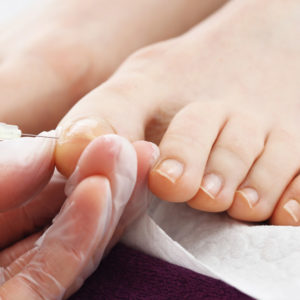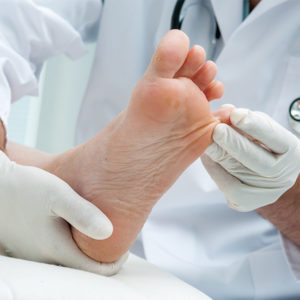Minor surgery involves nail surgery techniques whereby either part or all of a nail is removed. Where a nail has been involved in trauma, a fungal infection is advanced and unresponsive to conservative care, or nails in-grow or involute on a repeat basis, then minor surgery is a simple process and a permanent solution. A local anaesthetic is given in the toe to be operated on and the procedure will take around 40 minutes or less to complete.
Where verrucae are persistent and other techniques don’t provide a solution then dry needling is a minor surgical procedure that is effective in most cases.
The virus which causes the verruca pedis exists in the upper layer of the skin (epidermis) and the biochemistry of the immune system is based in the lower layer of the skin(dermis), so the needling technique, essentially punctures the verruca lesion and exposes the verruca virus to the deeper adipose tissues which stimulates the immune system so biochemically causing the immune process to act and destroy the virus and thus the verruca lesion on the surface.
Patients prior to minor surgery will be fully assessed to ensure that they are appropriate for the proposed procedure and also the anaesthetic – the assessment will involve considering general health matters against the patient’s neurological and vascular status.
Each procedure will be fully explained to the patient and they will be issued with a booklet explaining in detail the pre and post-surgical measures they should take to promote their best care.
Each minor surgery is proposed as a package which includes the surgery, the anaesthetic and follow up re-dressings and aftercare.
This technique is a medical cosmetic process and is performed by a podiatrist using a specialist technique to build layers of gel which do not harden like an acrylic in a beauty process but remain flexible to accommodate the movement of the toe.
The nail can be constructed and shaped like a natural nail but is not permanent and will last between 6-8 weeks (or longer) prior to requiring a repeat process.



The prosthetic nail is used post nail surgery where patients want to replace a nail that was removed because of injury and trauma, fungal infection or some other pathology where removal was the most appropriate solution. Nail reconstruction is suitable for most patients – no anaesthetic is required.
© 2024 The Oxford Foot and Ankle Centre | Design and Build : Blacksmith